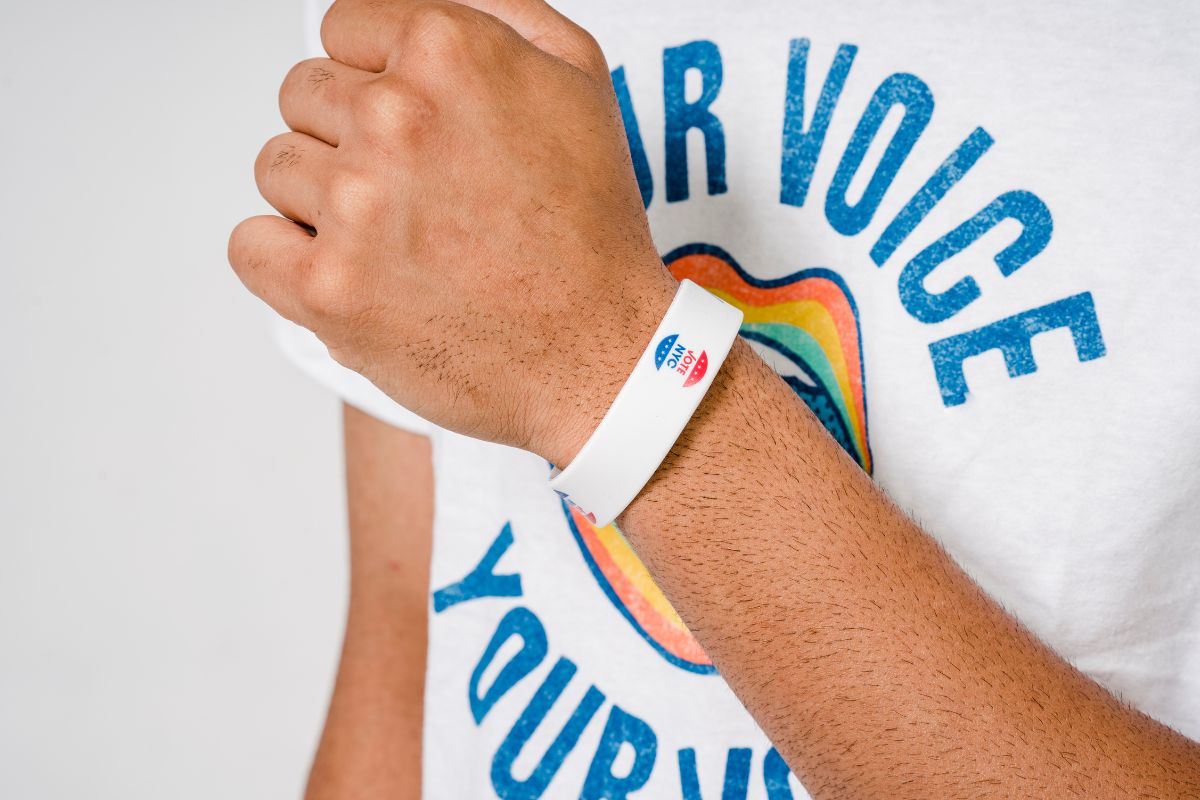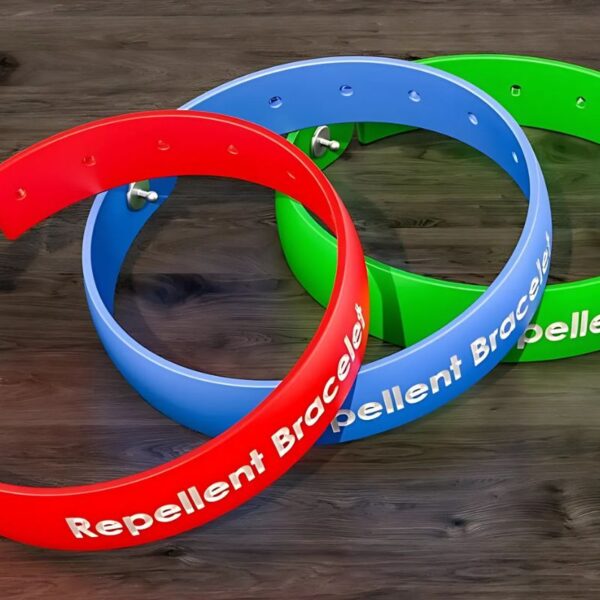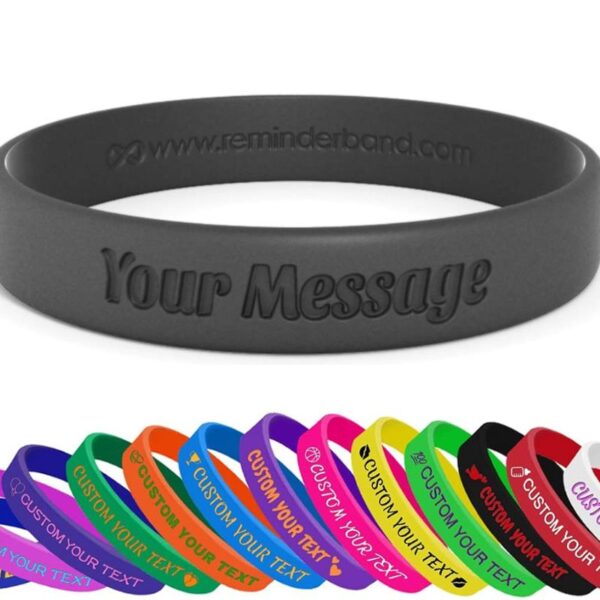In today’s event management landscape, custom wristbands have become an indispensable tool for organizers. Whether you’re planning a music festival, corporate conference, or charity gala, selecting the right type of wristbands can significantly impact your event’s success. Discover to choose the perfect wristband material for your specific needs and create a solution that stands out.
Table of contents
Understanding Different Wristband Materials
The foundation of any successful event access control system starts with choosing the right material to make your custom wristband. Custom silicone bracelets have gained immense popularity due to their durability and comfort. These versatile bands are perfect for multi-day events where participants need a long-lasting, comfortable solution.
Plastic wristbands offer a secure alternative with their snap-closure mechanism, making them ideal for events requiring strict access control. Meanwhile, rubber bracelets provide a casual yet durable option that appeals to younger audiences and is perfect for promotional events.
For those seeking eco-friendly alternatives, custom rubber bracelets made from recycled materials are becoming increasingly popular. These environmentally conscious options don’t compromise on quality while supporting sustainability initiatives.
Event-Specific Considerations
| Material | Best For | Key Features | Customization Options | Cost |
|---|---|---|---|---|
| Silicone | Long-term use, branding, and awareness campaigns | Durable, weather-resistant, and hypoallergenic | Debossed, embossed, multi-color, glow-in-the-dark, and printing | Moderate |
| Plastic | Event security, short-term use, and access control | Tamper-evident, waterproof, and lightweight | Barcodes, sequential numbering, and multi-color options | Low |
| Rubber | Budget-friendly events and giveaways | Stretchable, basic durability | Simple designs and colors | Low |
| Cloth (Fabric) | Premium events, festivals, or multi-day access | Comfortable, durable, and reusable | Woven or printed designs, RFID integration | High |
| Vinyl | High-security events and waterproof environments | Tear-resistant, durable, and waterproof | Holographic finishes, sequential numbering | Moderate to High |
| Tyvek | Single-day events, cost-effective and temporary use | Tear-proof, waterproof, and lightweight | Printed logos, barcodes, and sequential numbering | Low |
When selecting your wristbands, consider the following factors:
Duration
For single-day events, simple Tyvek bands might suffice, while silicone wristbands are better suited for multi-day festivals.
Venue Type
Indoor corporate events might benefit from more sophisticated RFID-enabled plastic wristbands, while outdoor music festivals often work well with durable custom silicone bracelets.
Weather Conditions
If your event is outdoors, waterproof materials like silicone or vinyl are essential.
Design Elements That Matter
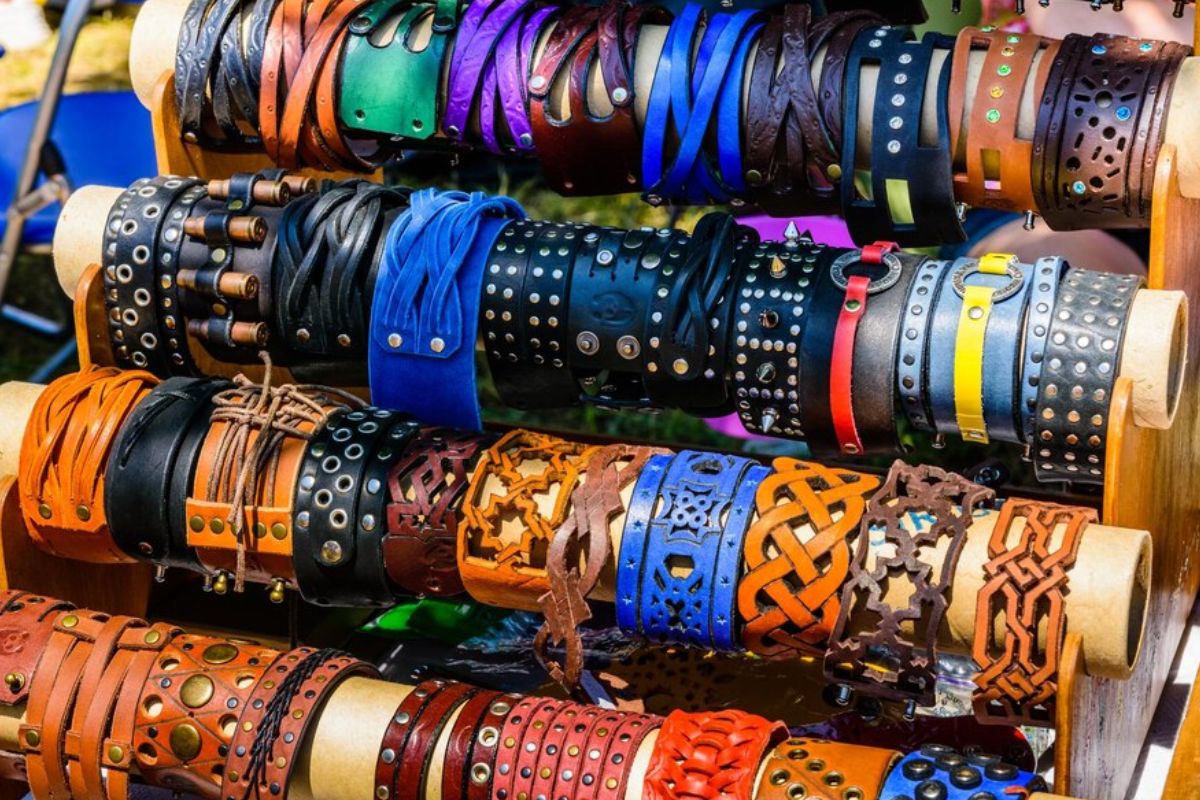
Your wristbands should reflect your event’s brand and purpose. Custom wristbands offer various design possibilities:
- Color selection that matches your event theme
- High-quality logo printing
- Special effects like glow-in-the-dark or UV-reactive materials
- Sequential numbering for security
Let me expand these sections with more detailed information.
Budget Considerations
| Item | Estimated Cost (USD) | Description |
|---|---|---|
| Material | $0.50 (per unit) | Cost of raw materials (fabric, silicone, etc.) |
| Design & Customization | $100 (one-time) | Cost of design creation, customization fees |
| Printing/Embossing | $0.20 (per unit) | Printing or embossing logos, text, or images |
| Manufacturing Cost | $0.75 (per unit) | Labor and manufacturing costs per wristband |
| Packaging | $0.30 (per unit) | Cost of packaging materials (boxes, bags, etc.) |
| Shipping (Bulk Order) | $200 (total) | Shipping cost for bulk order |
| Inventory Storage | $50 (monthly) | Cost of storing wristbands in a warehouse |
| Marketing & Promotions | $100 (one-time/month) | Cost for promoting wristbands (advertising, etc.) |
| Miscellaneous | $50 (total) | Unexpected costs (tax, overheads, etc.) |
When planning your event’s wristband budget, several key factors deserve careful attention:
Cost Analysis
- Per-unit pricing varies significantly: Tyvek bands might cost $0.10-0.30 each, while custom silicone bracelets range from $0.50-2.00 depending on features
- Volume discounts: Most suppliers offer significant price breaks at certain quantities (typically 100, 500, and 1000 units)
- Setup costs: Custom designs often incur one-time setup fees for artwork and mold creation
Hidden Costs to Consider
- Rush order fees if you need expedited production
- Shipping costs (especially for international suppliers)
- Additional security features like RFID chips or special inks
- Replacement stock (recommend ordering 5-10% extra)
Value Assessment
- Consider durability vs. cost: Higher-quality materials like custom rubber bracelets might seem more expensive initially but could be more cost-effective for multi-day events
- Factor in the cost of replacement for cheaper materials that might fail during the event
- Calculate the total cost of ownership, including staff time for distribution and security checks
Security Features
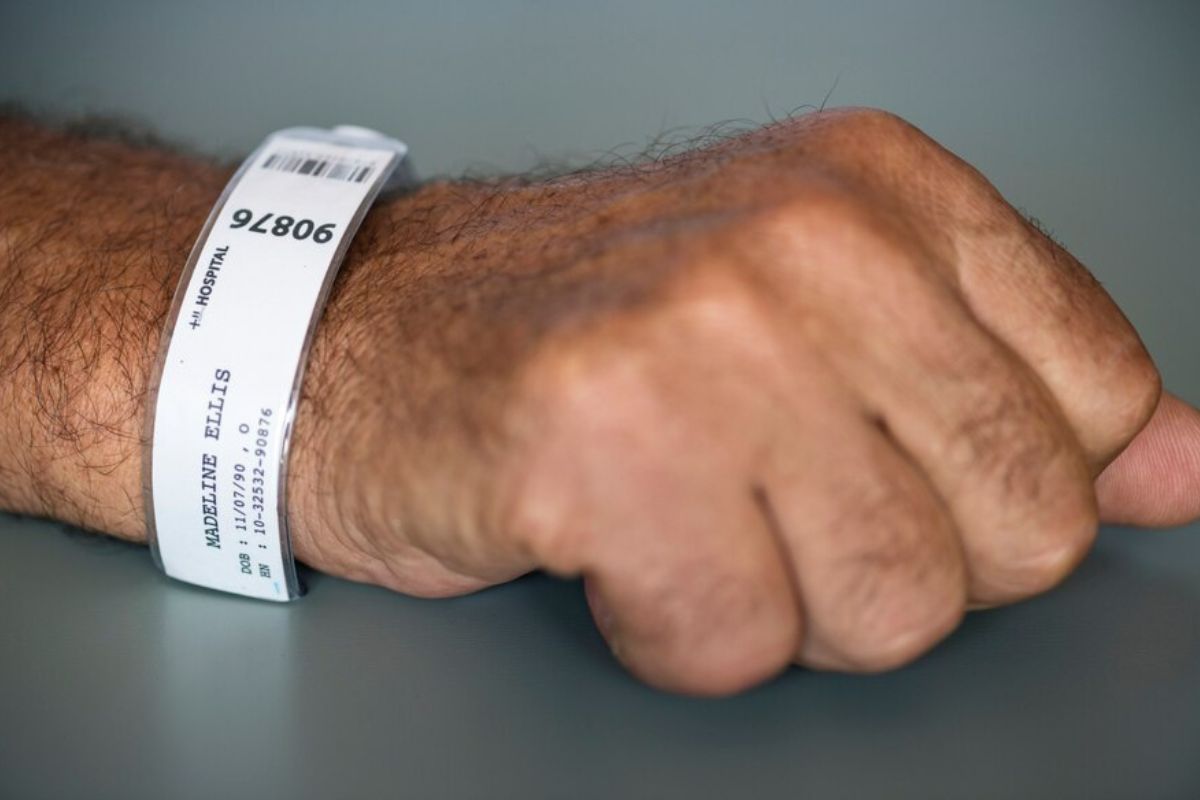
Modern event wristbands offer sophisticated security options to prevent counterfeiting and unauthorized access:
Physical Security Elements
- Tamper-evident adhesives that show visible damage if removed
- Sequential numbering for inventory control and validation
- Holographic overlays that are difficult to replicate
- UV-reactive inks visible only under blacklight
- Micro-printing and specialized patterns
Digital Security Integration
- RFID/NFC chips embedded in plastic wristbands for:
- Contactless payments
- Access control to different event areas
- Real-time tracking of crowd movement
- Digital ticket validation
- Scannable QR codes for quick verification
- Bluetooth connectivity for enhanced features
Security Best Practices
- Train staff on identifying authentic wristbands
- Implement different colors or designs for various access levels
- Use multiple security features for high-profile events
- Document security protocols for staff reference
Practical Implementation Tips
| Step | Tip | Action/Details |
|---|---|---|
| 1. Define Your Goal | Understand the purpose of the wristbands. | Are they for promotion, events, fundraising, or personal use? Tailor your design and budget accordingly. |
| 2. Choose the Right Material | Select the material based on comfort, durability, and cost. | Silicone for low-cost options, fabric for high-quality feel, or leather for premium products. |
| 3. Design Considerations | Make the design simple, attractive, and functional. | Ensure the design is clear, fits the brand, and is easy to read/recognize. Keep it minimal but impactful. |
| 4. Find a Reliable Supplier | Research suppliers with good reviews and reliable shipping. | Get quotes from multiple suppliers and check their production times. |
| 5. Customization Options | Offer multiple customization options (colors, logos, messages). | Use online tools to visualize designs or hire a designer to help with custom artwork. |
| 6. Bulk Ordering | Consider ordering in bulk to save costs. | Get price breaks for large orders. Calculate the demand to avoid overstocking or understocking. |
| 7. Quality Control | Inspect samples before mass production. | Ensure the quality meets your standards by checking sample quality for printing, embossing, and durability. |
| 8. Marketing and Promotion | Promote wristbands as part of a larger campaign. | Use social media, email marketing, and influencer partnerships to spread awareness. |
| 9. Distribution Channels | Set up an efficient distribution method. | Decide whether you’ll sell them online, distribute at events, or give them away as promotional items. |
| 10. Pricing Strategy | Price wristbands competitively while considering costs and profit margins. | Calculate total costs (production, shipping, storage) and set a reasonable markup to ensure profitability. |
| 11. Track Performance | Monitor sales and feedback to gauge success. | Use analytics to track orders, and gather customer feedback for future improvements. |
| 12. Post-Launch Adjustments | Make improvements based on customer feedback. | Adjust the design, material, or marketing strategies based on customer preferences or complaints. |
Successfully implementing your wristband system requires careful planning and execution:
Pre-Event Planning
Timeline Development
- Order custom wristbands 4-6 weeks before the event
- Allow extra time for complex customizations
- Plan for sample approval and revisions
Distribution Strategy
- Create a systematic plan for wristband distribution
- Set up multiple distribution points for large events
- Prepare clear instructions for attendees
During the Event
- Staff Training
- Conduct thorough training on:
- Proper application techniques
- Security feature verification
- Replacement procedures
- Troubleshooting common issues
- Conduct thorough training on:
- Quality Control
- Regular checks of wristband integrity
- Monitor for any security breaches
- Track inventory levels
- Document any issues or concerns
Contingency Planning
- Emergency Procedures
- Keep emergency replacement stock
- Establish clear protocols for lost or damaged wristbands
- Have backup verification methods ready
- Problem Resolution
- Create a dedicated help desk for wristband issues
- Maintain clear communication channels between security teams
- Document all incidents and resolutions
Best Practices for Different Events

Music Festivals
Opt for durable silicone wristbands with anti-counterfeit features to enhance security and provide a long-lasting keepsake for attendees.
Corporate Conferences
Consider RFID-enabled plastic wristbands for seamless access control, ensuring efficient check-ins and personalized experiences.
Sporting Events
Choose weather-resistant custom rubber bracelets designed for comfort, making them ideal for active environments and outdoor use.
Charity Functions
Select stylish custom silicone bracelets that participants will cherish and continue to wear as a memento long after the event concludes.
Ordering Guidelines
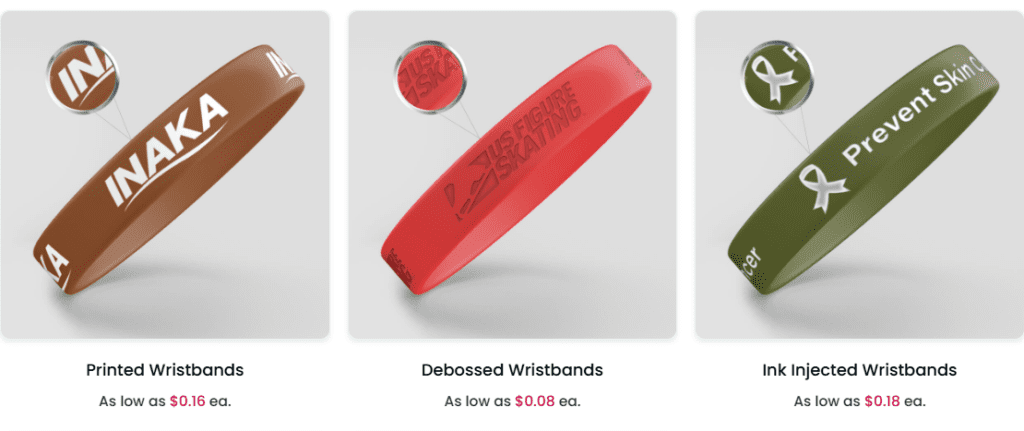
Follow these steps for a successful order:
- Research reliable suppliers
- Request material samples
- Verify customization options
- Check minimum order quantities
- Confirm delivery timelines
- Review security feature requirements
Looking Ahead
The future of event wristbands is evolving with technology. Smart wristbands with integrated payment systems and digital access control are becoming more common. However, traditional custom wristbands remain a reliable and cost-effective choice for many events.
Conclusion
Selecting the right wristbands for your event requires careful consideration of multiple factors. Whether you choose custom silicone bracelets, plastic wristbands, or traditional rubber bracelets, ensure they align with your event’s specific needs, budget, and security requirements. Remember that the right choice will enhance your attendees’ experience while providing effective access control and brand promotion opportunities.
Take time to evaluate your options, consider your audience, and choose a solution that offers the best balance of functionality, security, and style. With proper planning and implementation, your chosen wristbands will contribute significantly to your event’s success.
FAQs
Q.1 What are the most durable materials for custom wristbands?
- Silicone is the most durable, followed by Tyvek, fabric, and PVC.
Q.2 How can I incorporate my event’s theme into the wristband design?
- Use custom colors, logos, graphics, or event-specific symbols to match your theme.
Q.3 What are the best practices for ordering custom wristbands in bulk?
- Determine quantity, choose the right material, ensure high-quality design, order in advance, and check for bulk discounts.
Q.4 How do I ensure my wristbands are eco-friendly?
- Opt for biodegradable materials, like recycled silicone or compostable Tyvek, and choose suppliers with sustainable practices.
Q.5 What are the key differences between silicone and Tyvek wristbands?
- Silicone is durable, flexible, and waterproof for long-term wear. Tyvek is lightweight, tear-resistant, and ideal for short-term events.

